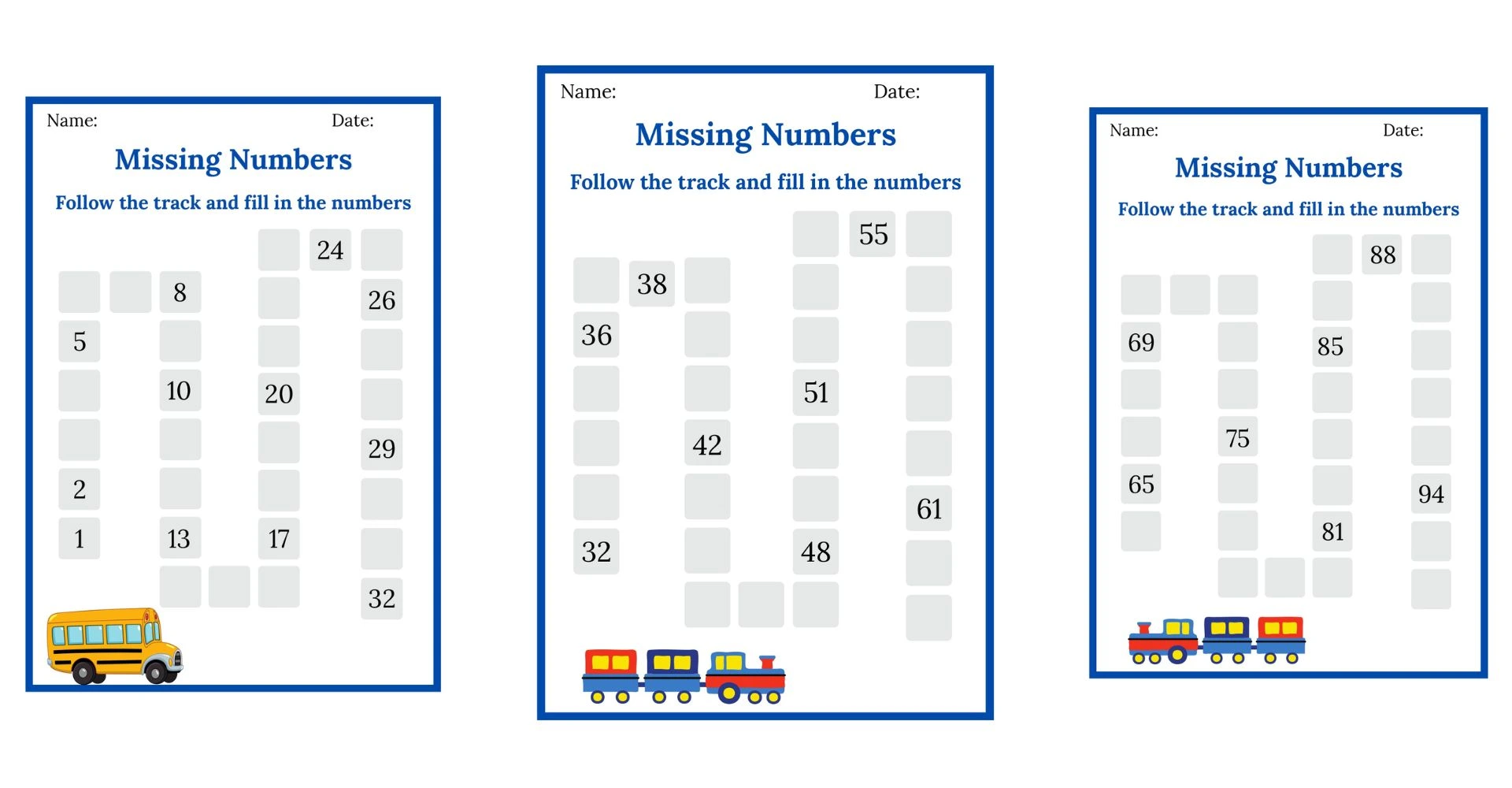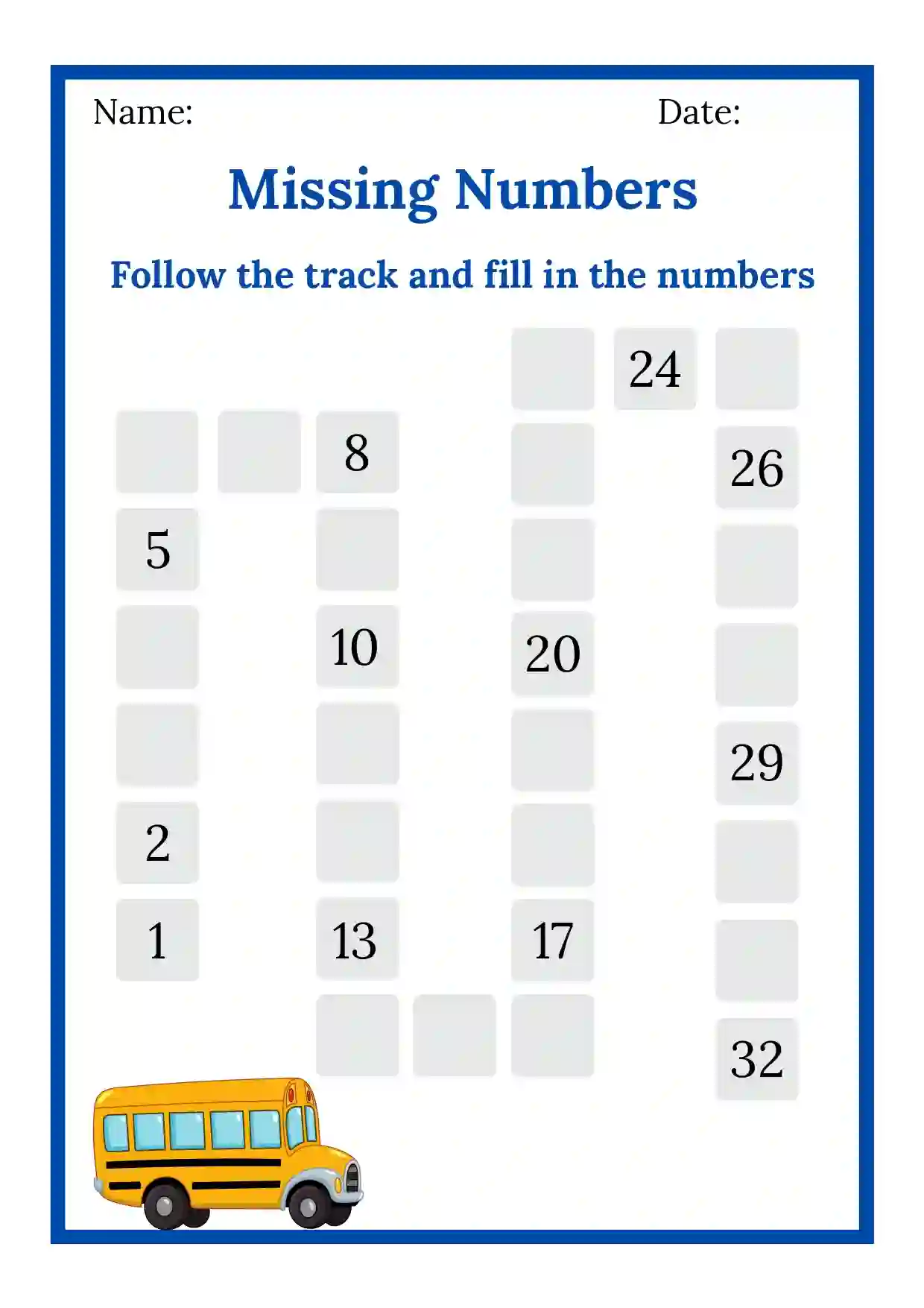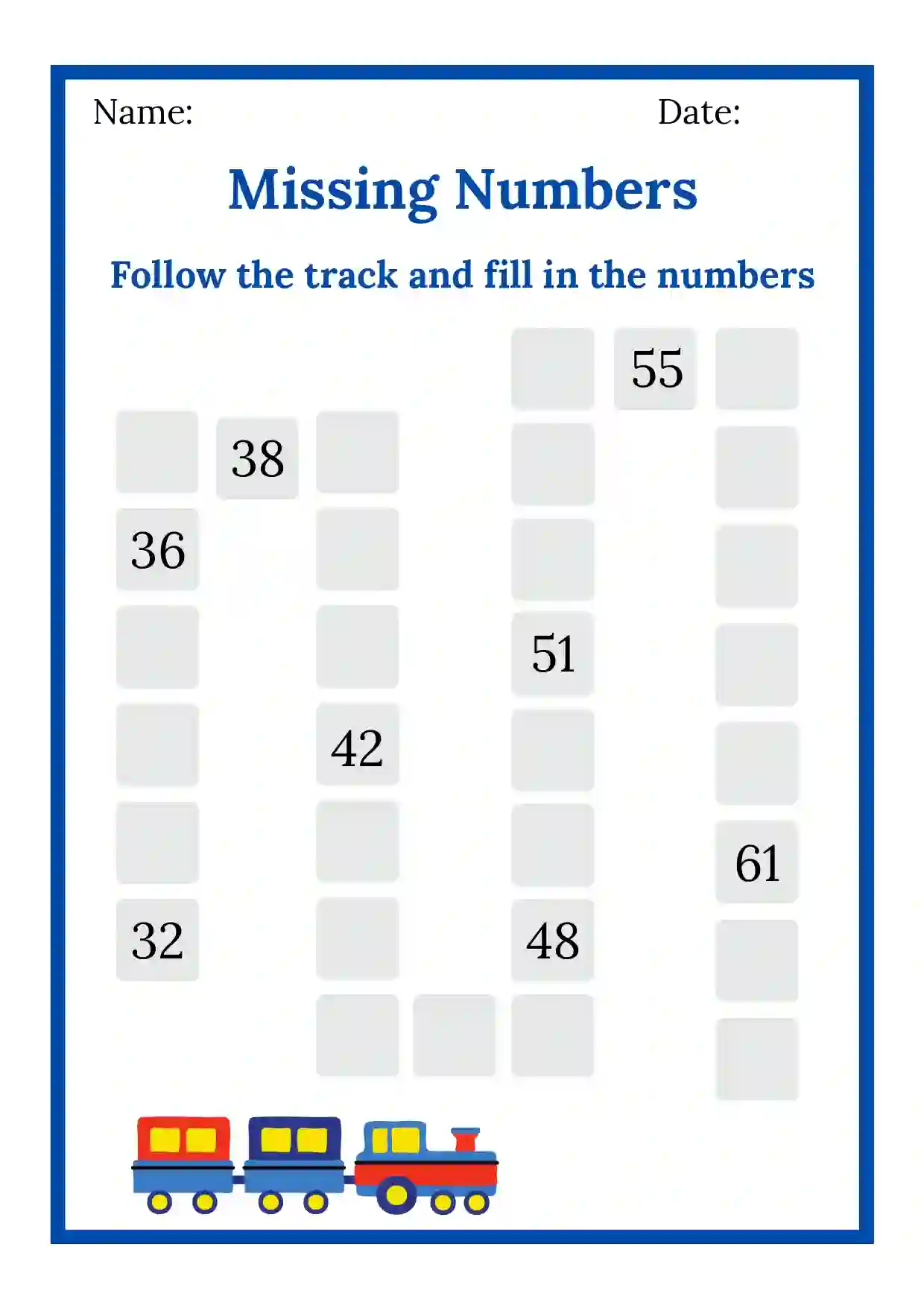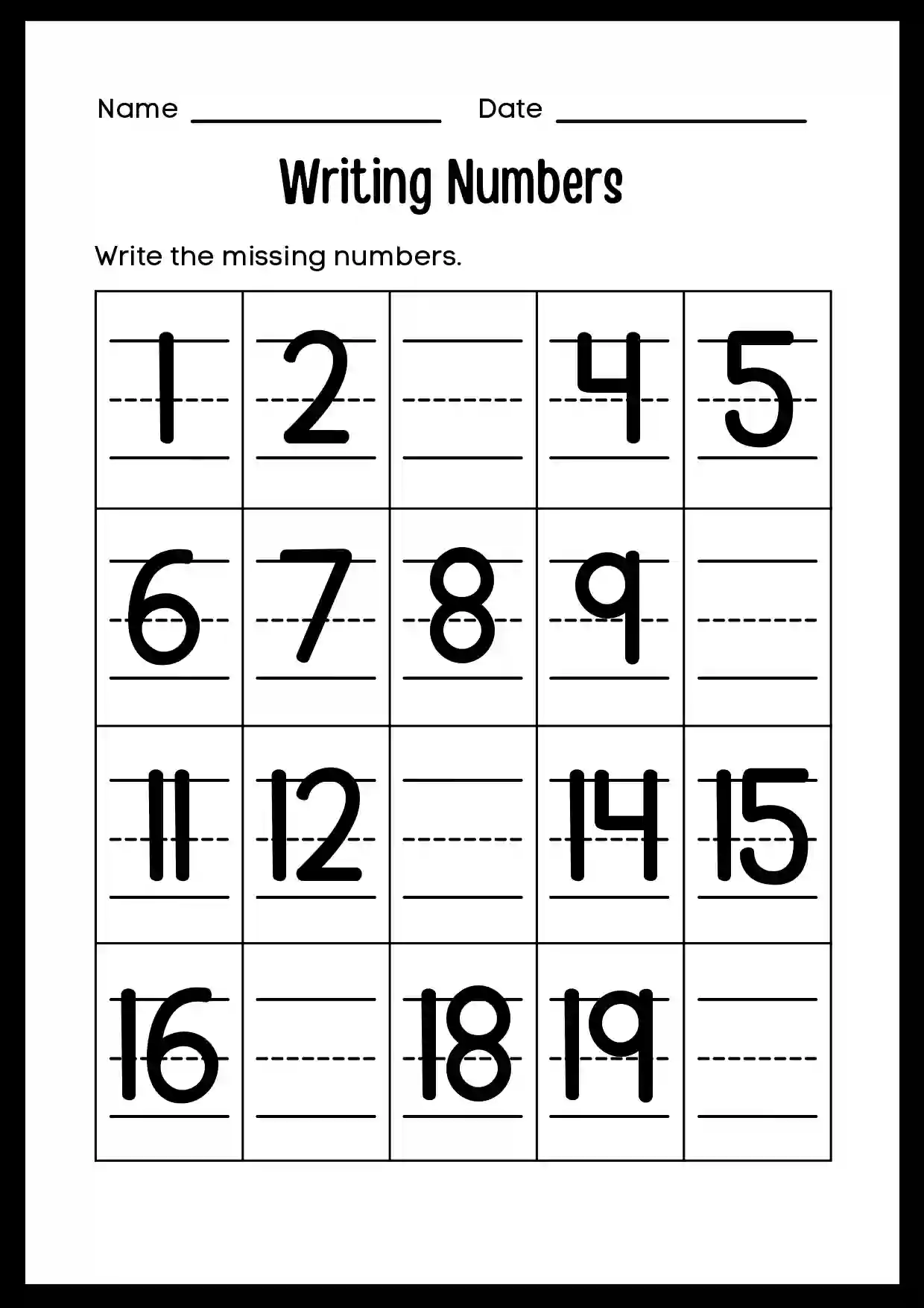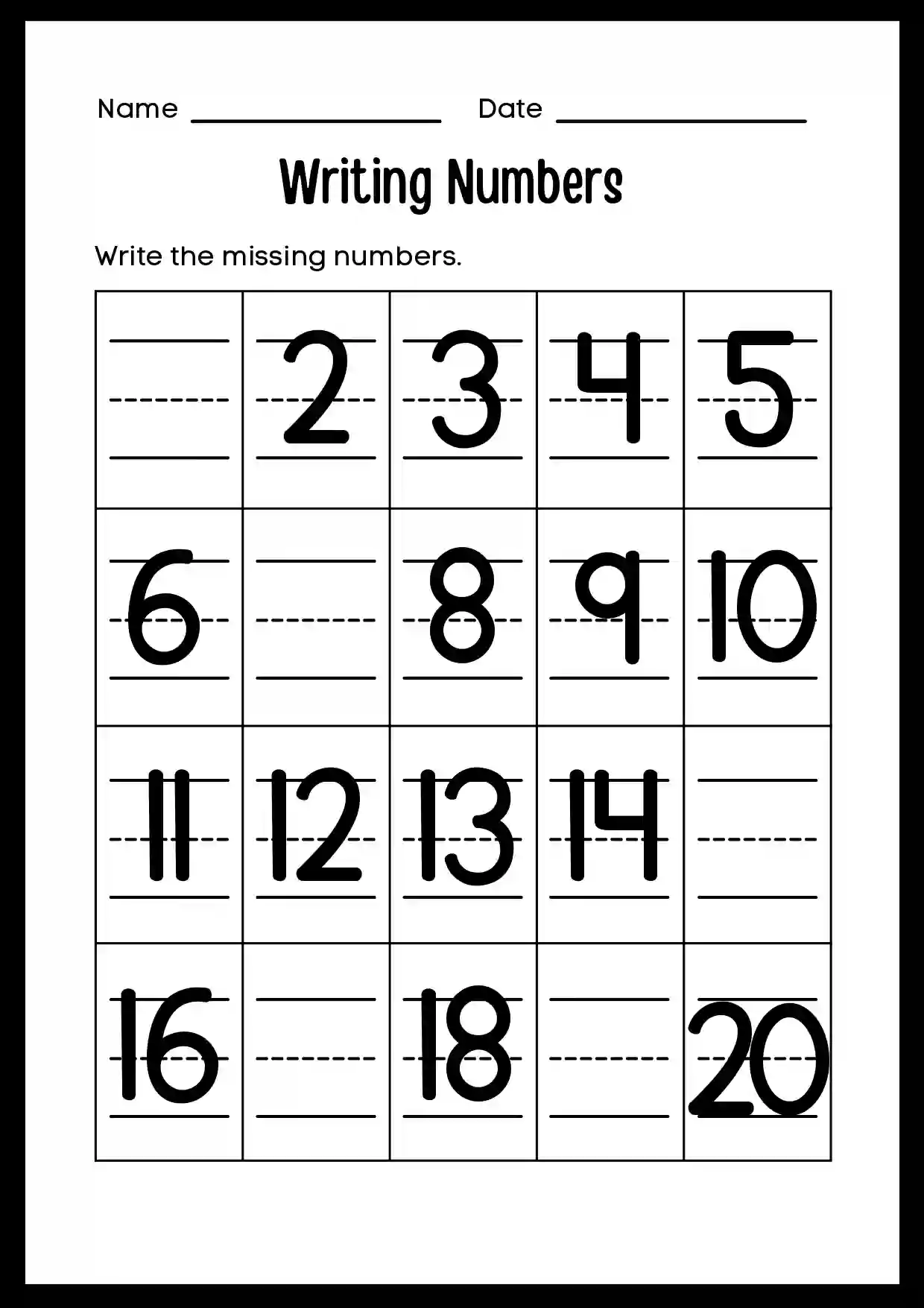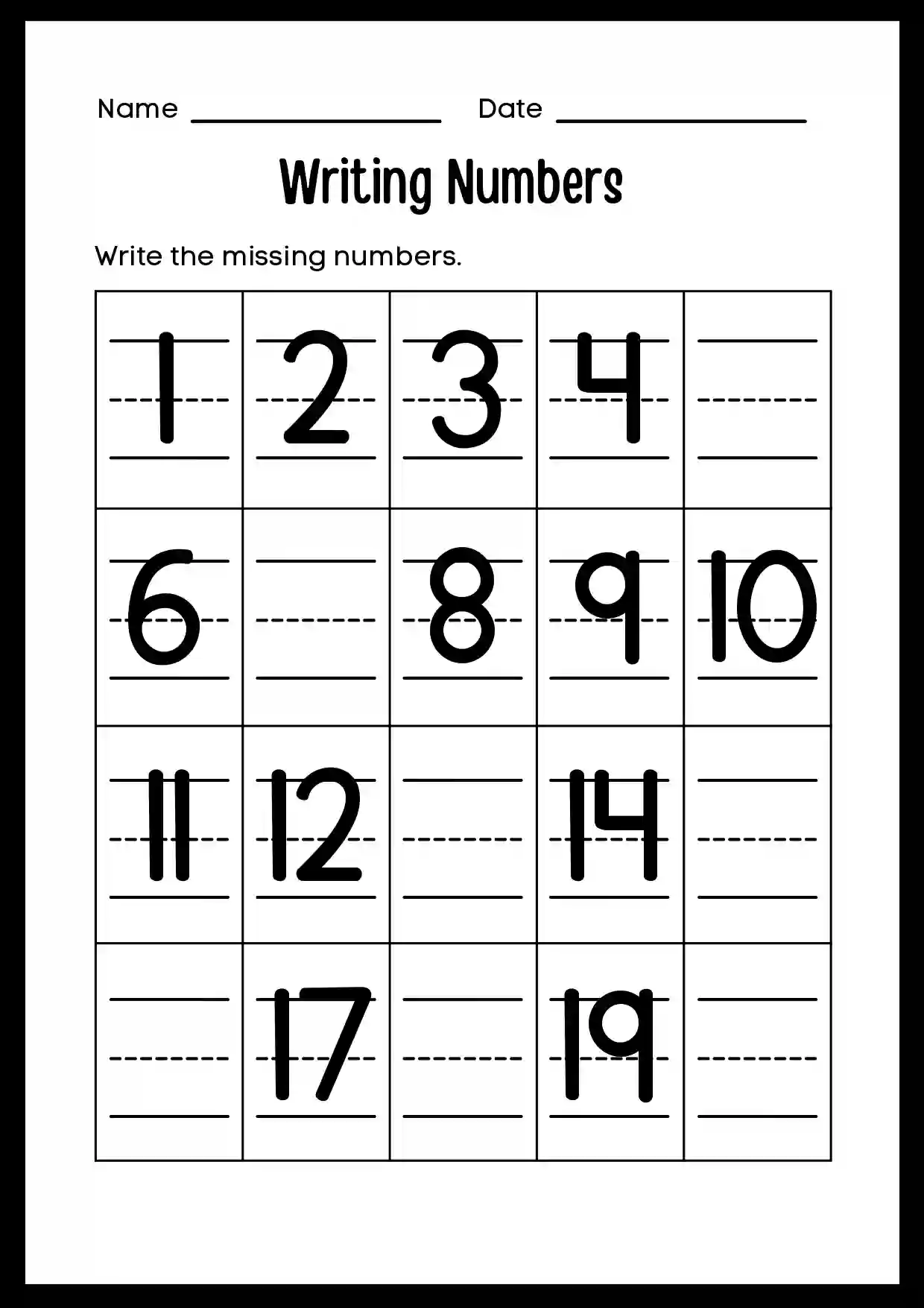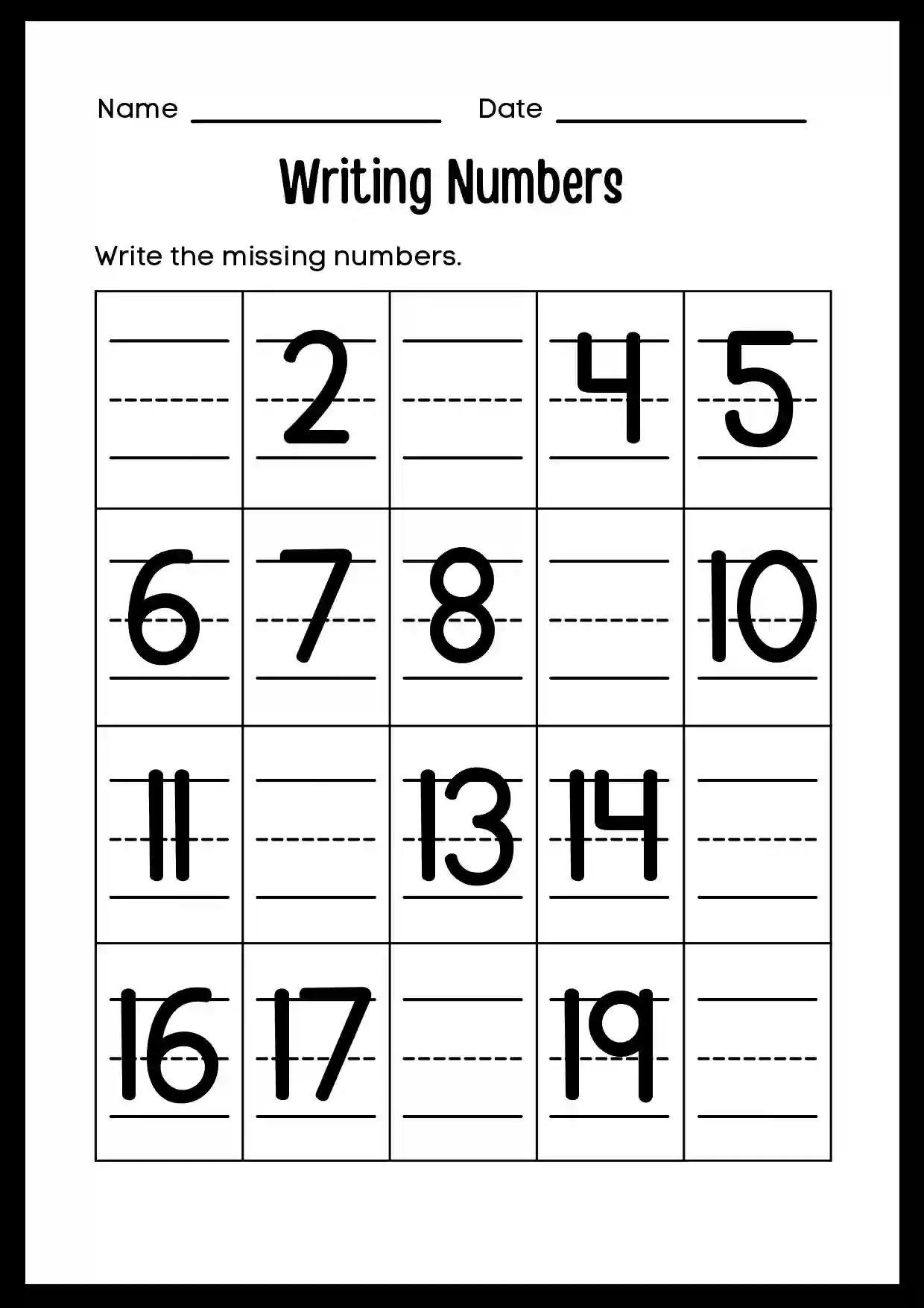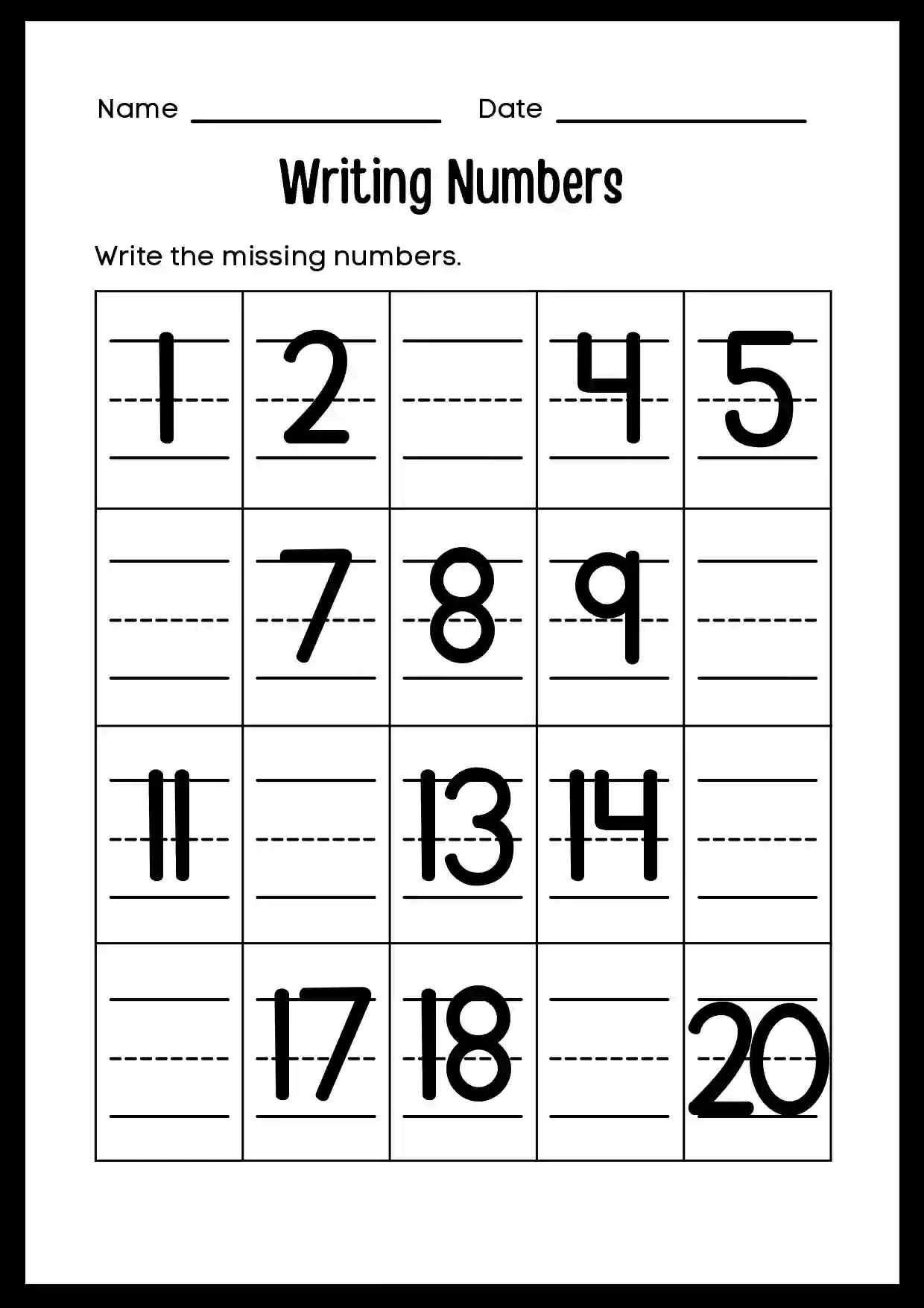Welcome to our latest worksheet focusing on developing number sense and critical thinking skills! Our “Missing Numbers Worksheets 1-100” is designed to engage young learners in a fun and interactive way while strengthening their understanding of numbers from 1 to 100.
The primary aim of these worksheets is to facilitate the mastery of numbers from 1 to 100 among children in their formative years. By engaging in activities centred around identifying missing numbers within a sequence, learners develop several key competencies:
- Number Recognition: Through repeated exposure to numerical sequences, children learn to identify and differentiate between individual numbers.
- Counting Skills: By systematically analyzing number patterns, learners reinforce their ability to count forwards and backwards within the given range.
- Problem-Solving Abilities: The task of identifying missing numbers encourages children to apply logical reasoning and deduction, fostering a foundation for mathematical problem-solving.
- Sequential Thinking: Recognizing numerical sequences cultivates an understanding of order and progression, essential for mathematical comprehension in later years.
Missing Numbers Worksheets Details:
| Feature | Details |
|---|---|
| Format | Downloadable PDF |
| Number of Pages | 13 |
| Content | Missing Numbers from 1 to 100. |
| Illustrations | Yes, playful and age-appropriate |
| Difficulty Level | Preschool and Kindergarten |
| Printable? | Yes |
Who is this for?:
This worksheets is suitable for children in LKG (Lower Kindergarten), UKG (Upper Kindergarten), nursery, preschool, and kindergarten. The flexible design allows for adaptation to various learning environments, including homeschooling, classroom instruction, and supplemental tutoring sessions.
Materials Needed: To start this educational journey, minimal resources are required:
- Printed Copy of the Worksheet: You should have the PDF of Missing Numbers Worksheets 1-100 which you will get here.
- Writing Utensils: Prepare crayons or coloured pencils for completing the worksheets tasks. The use of vibrant colours can enhance engagement and visual appeal, making the learning experience more enjoyable for young learners.
How to Use: follow these step-by-step instructions:
- Introduction: Begin the activity by introducing the concept of missing numbers to the learners. Emphasize the significance of numerical sequencing and the challenge of identifying missing elements within a given sequence.
- Guided Practice: Begin with a guided practice session, wherein the educator or parent demonstrates the process of identifying and filling in missing numbers for a few sample sequences. Provide explanations and verbal cues to scaffold the learning process.
- Independent Exploration: Encourage independent exploration as learners tackle the remaining sequences on their own. Foster a supportive environment where children feel empowered to apply their newfound skills autonomously.
- Review and Reflection: Conclude the activity with a review session, during which learners can compare their answers, discuss strategies, and reflect on their learning experiences. Encourage open dialogue and constructive feedback to reinforce conceptual understanding.
Differentiation Tips: Consider implementing the following strategies to differentiate instruction effectively:
- Visual Aids: Incorporate visual aids such as number charts, manipulatives, or pictorial representations to reinforce numerical concepts visually.
- Kinesthetic Activities: Integrate hands-on activities such as number tracing, counting games, or interactive puzzles to engage kinesthetic learners.
- Multisensory Approach: Appeal to multiple senses by incorporating auditory cues, tactile experiences, and kinesthetic movements into the learning process.
- Adaptive Technology: Leverage educational apps, interactive whiteboards, or digital learning platforms to provide personalized learning experiences tailored to each child’s unique needs.
Additional Activities: Extend the learning journey beyond the confines of the worksheets with these supplementary activities:
- Number Hunt: Organize a scavenger hunt wherein children search for numerical patterns in their surroundings, from street addresses to household items.
- Number Bingo: Play a game of number bingo using flashcards or homemade bingo boards, reinforcing number recognition and sequencing skills in a playful context.
- Storytime Math: Integrate mathematical concepts into storytelling by creating narratives that involve numerical sequences, counting adventures, or pattern recognition quests.
Download & Printing:
Download the PDF File Here:
Liked This? Also Download Number Tracing Worksheets 1 to 10.
How to Print:
- Download the PDF: Click on the provided link to access the printable worksheets in PDF format.
- Printing Settings: Configure the printer settings to align with your preferences and requirements. Select the appropriate paper size, orientation (portrait or landscape), and quality settings to optimize printing results.
- Print Preview: Prior to printing, utilize the print preview feature to review the layout and formatting of the worksheets. Make any necessary adjustments to ensure clarity and readability.
- Printing Process: Initiate the printing process and await the completion of the print job. Once printed, distribute the worksheets to eager learners, ready to embark on their mathematical exploration.
Tips for Parents and Educators:
- Encouragement: Offer words of encouragement and praise to foster a positive learning environment where children feel supported and motivated to excel.
- Active Engagement: Actively engage with children during the learning process, asking open-ended questions, and providing guidance as needed.
- Reinforcement: Reinforce learning outside the classroom by incorporating mathematical concepts into everyday activities, such as cooking, shopping, or playing games.
- Collaboration: Foster collaboration between parents, educators, and children, creating a cohesive support network dedicated to nurturing academic growth and development.
Common Mistakes and Solutions:
Anticipate common challenges encountered by learners and provide effective solutions to address them:
- Confusion with Sequencing: Children may struggle with sequencing numbers accurately, leading to errors in identifying missing numbers. Offer visual aids, repetition, and guided practice to reinforce sequential thinking skills.
- Lack of Confidence: Some learners may feel apprehensive or insecure about their mathematical abilities. Build confidence by celebrating small victories, providing constructive feedback, and emphasizing the importance of perseverance and effort in the learning process.
- Difficulty with Higher Numbers: The transition to larger numerical ranges (e.g., 1-100) may pose challenges for some learners. Break down complex sequences into smaller, manageable chunks, gradually increasing the difficulty level as children gain confidence and proficiency.
We value your feedback and insights! Share your thoughts, experiences, and suggestions in the comments section below. Together, let’s create an inclusive learning community dedicated to fostering educational excellence and empowering young learners to reach their full potential.
By implementing these strategies and resources, educators and parents can create a learning environment where children thrive academically, develop critical thinking skills, and cultivate a lifelong love for learning.
